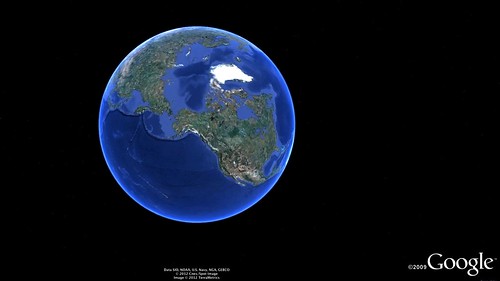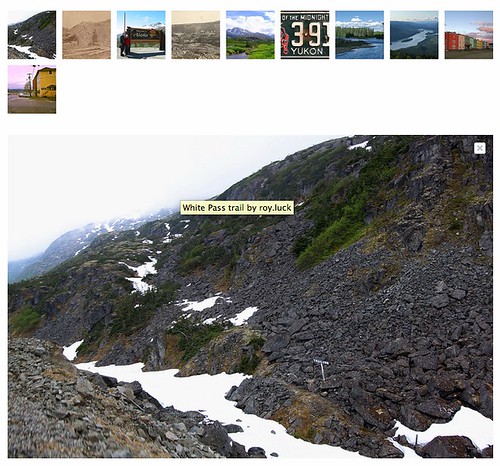Guest post by Mike Seyfang. Mike is a media coordinator with the University of Adelaide.
Recent work from the Australian Centre for Ancient DNA (ACAD) has attracted a lot of media attention with headlines such as “Ancient bison bones hold climate clues”, “How stressed bison got around the dictates of DNA” and “Bisons adapted to climate change”. I caught up* with Alan Cooper (Director ACAD) to find out what all the fuss was about and learned a lot more than I had expected in the process. It turns out that this area of research examines certain modified DNA bases that can control whether genes are turned on or off, and provide a means for adaptive traits to be stably inherited from one generation to the next. In effect, this provides a means for species to rapidly adapt to environmental change and ACAD researchers set out to see whether these ‘epigenetic markers’ are also preserved after death and can be measured in extinct species. The work described in the paper “High-Resolution Analysis of Cytosine Methylation in Ancient DNA” gives scientists a new tool for probing mechanisms which have allowed populations to adapt rapidly to changed environments in ancient history. If you need a quick introduction to terms like ‘epigenetics’, ‘methylation’ take a peek at the definitions section at the bottom of this article.
The study of Ancient DNA brings with it many challenges. I asked Alan – “exactly how does one get one’s hands on a thirty thousand year old specimen of bison DNA?”. As he explains in this short (2:33) video:
“Fieldwork in the Yukon region (Klondike goldfields) is amazing. In a harsh environment surrounded by ice, brown bears and dynamite the trick is to convince gold miners to let you crawl around picking up bits and pieces lying among freshly unearthed gold“. Judging by the smile on Alan’s face as he re-counts these adventures it is obvious he really enjoys the field work of collecting specimens of ancient DNA.
MAP ZOOM
The next set of challenges will sound familiar to people who spend a lot of time working in labs. “it took us 6 bison to find one that contained good enough quality DNA” … then “the technique we use is to destroy everything except what you are looking for in tiny samples where you hardly have anything to begin with“. Currently, the standard technique maps cytosine bases that have been epigenetically modified with a methyl CH3 group by using a chemical that destroys all normal cytosines and leaves only the modified bases. Alan describes this process as like looking for a needle in a haystack with a few clues to start with and the added challenge of being limited to a small number of attempts. Some of the clues were obtained by using a cow as a proxy for the bison. Studying methylation patterns in DNA from ‘fresh bovine tissue’ provided important clues about what to look for and where in the genetic sequence. Even with these clues the task was difficult because researchers didn’t know that the methyl group would still be there from 30-40 thousand years ago. There was some good fortune in this project, the team could see methylated bases and that they were often associated with 50/50 (half methylated, half not) signaling. This is encouraging because it is what you expect for a trait inherited from two parents, one epigenetically modified, one not. Soon, with the aid of new next generation sequencers, it will be possible to make equivalent measurements in real time, without destroying the sample.
A further challenge for this work was getting the paper published -“The medical people measure epigenetics but evolutionists aren’t really that interested“. It took about a year of getting bounced around from publisher to publisher to find a journal where anyone could be convinced that the study of epigenetics in (ancient) DNA was important.
In conclusion, Cooper and team have given researchers a new tool to examine how epigenetic markers (methylation patterns) change through time in response to climate and other environmental changes. The next steps will be to refine the tools available through incorporation of next generation sequencing technology. Then it will be possible to take the method forward and study whole populations, measuring them as they go through extreme events such as the ‘last Galacial Maximum’ and asking questions such as ‘how do animals and populations adapt?’. We now have a way to measure a means of rapid adaption, we need to go out and get the funding to examine how this works in large numbers of Bison across space and time. As Cooper says, funding applications are the next step in the long line of science. Science that can give us answers to some of the really big questions we will face as our own environment changes with ever increasing speed.
* Audio recording of full interview.
Some definitions:
Epigenetics: (video) the study of heritable changes in gene expression or cellular phenotype caused by mechanisms other than changes in the underlying DNA sequence. In the words of the researchers: “Interposed between genes and environment, epigenetic modifications can be influenced by environmental factors to affect phenotype for multiple generations.”
Methylation: (video)
A methyl group (CH3) attached to something. When many cytosine bases are methylated genes can be turned off, a form of epigenetics.
Bison: (video) large ‘cow’ like creature , modern species include the American Plains and Woods Bison.
Bases: a group of nitrogen-based molecules that are required to form nucleotides, the basic building blocks of DNA and RNA. Nucleobases provide the molecular structure necessary for the hydrogen bonding of complementary DNA and RNA strands, and are key components in the formation of stable DNA and RNA molecules.
C’s: Carbon atoms.
Lamark (Lamarkian evolution): see also “science in seconds” and this article.
Last Galacial Maximum: a period in the Earth‘s climate history when ice sheets were at their maximum extension, roughly between 23,000 and 18,000 years ago.
Links:
Environment Institute blog post
Some of the press:
http://www.cosmosmagazine.com/news/5268/ancient-bison-bones-hold-climate-clues
http://yukon-news.com/opinions/columns/27402/
http://www.huffingtonpost.com/2012/02/03/yukon-bison-bone-discovery-permafrost_n_1250520.html
http://www.thehindu.com/sci-tech/science/article2851155.ece
http://epigenie.com/epigenetics-at-the-intersection-of-environment-and-selection/
http://digitaljournal.com/article/318900#ixzz1vZZi9SpQ
Media: archive.org collection, images more images
The paper
Guest Post by Mike Seyfang, if you would like to contribute as a guest blogger on The Environment Institute Blog email environment@adelaide.edu.au.



